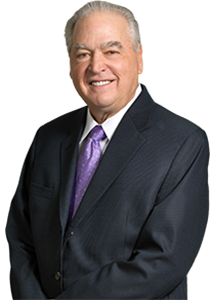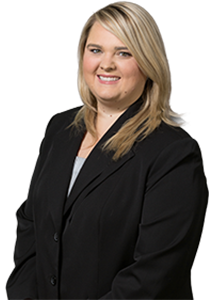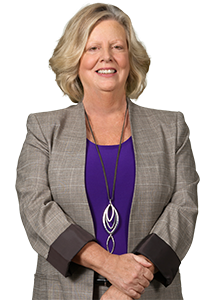For those of you who spend time in the estate planning arena, in helping your clients get the right property to the right people at the right time, you inevitably run into “the conflict”: The conflict between the mathematical truth that it is better, tax-wise, under virtually all circumstances, to have your clients give away property as soon as possible: and the reality that people are (and should be) reluctant to cede control over their wealth, which they generally worked very hard to build. The problem with this conflict is that we as planners tend to fall too quickly and easily into what business consultants call “the tyranny of the or.” We concede that the math and the control are mutually exclusive. But, luckily, that is simply not true.
Let’s assume that our clients are a successful couple in their early 50s. Their net worth is $8 million. If they die without any growth in their combined estate, they owe no estate taxes given the $5 million (indexed) exemption. But if they do not both die soon, their assets could increase in value to more than $10 million (indexed), the amount that they could exclude from estate taxation, under current law, working together. In fact, if we assume that their assets will grow at a 6% rate and that the survivor will live into his or her mid-80s, the million should double in value 3 times – to 14 million, then 28 million then 56 million.
Even with modest appreciation, then our clients will have a large estate tax bill. And if the $7 million is in assets that would be hard to sell quickly (such as real estate), or that we do not want to have to sell (such as a family business), the estate tax problem could get to be difficult and expensive to solve.
But right now, we have a great solution. We can have Mom and Dad make a gift right now, in an amount equal to the current gift tax exemption, while keeping enough to live comfortably. In other words, they can give away “the extra” (the property that is more than what they believe they will need to live comfortably); or, stated another way, those investment assets that they will never need to touch, based upon reasonable projections.
The problem is again, at least in my world, not a lot of this kind of planning is getting done. SO the question is, why not? While the answers to that question are probably as varied and as numerous as the people who answer it, the answers tend to boil down to these two themes:
1) We recently experienced, as a country, one of the worst economic stretches in our history. From late 2008 through early 2009, what felt like “enough” became “not enough” almost overnight. Having just experienced that national economic nightmare, people are less willing to part with what seems to be “the extra.”
2) Even if our clients had not just survived the Great Recession, andeven if they did have some level of confidence, people in their mid-50s, with at least 30 years of life expectancy in front of them, are reluctant (to say the least) to relinquish control over a portfolio they’ve worked a lifetime to build.
So are we back to the beginning? Do we have that common planning tug of war: The raw, compelling math that screams, “should clients give it away?” versus pulling against the raw human fears of losing control and becoming a pauper?
The difference is that we have an intelligent solution that guides our clients away from the tyranny of the or. Let’s go back to our $8 million example and let’s assume Mom and Dad believe that, based upon their lifestyle and growth assumptions, they will conservatively need $2 million to live comfortably. Therefore, using our terminology, $6 million is the extra. So let’s take that $6 million and title it in such a way, that under state law, half of that property is owned exclusively by Mom and half is owned exclusively by Dad. Dad, then, using his gift tax exemption, will give his property to a trust. Under that trust, Mom will have the right to control, enjoy, and transfer the property. And then Mom will do the same thing: transfer her property to a trust designed for Dad’s benefit.
If we do this, the $6 million is out of Mom and Dad’s estate. When they die, presuming that they consume the income and growth on the $2 million they keep, they will owe nothing in estate taxes. The trusts, who own the $6 million, and the appreciation on that property, are designed to avoid estate inclusion; in fact, they can be designed as dynasty trusts to avoid estate inclusion forever.
In discussing this idea with thoughtful and curious clients, inevitably those clients will raise a couple of issues or concerns, such as:
- What if Dad and Mom get divorced? Generally, upon divorce, the judge will divide the marital assets equally between the spouses. So, if we did nothing, the family court judge would take the $8 million of property that Mom and Dad own and divide it equally, $4 million to each. If we do engage in our plan, the judge will take the $2 million that Mom and Dad own and divide it equally between them ($1 million to each), and each spouse will continue to control the trust created by the other spouse. Assuming no growth in the trust assets, each would have control over an additional $3 million. At the end of the day, each would control $4 million, with only $1 million being subject to estate tax. In other words, even in divorce, both are in a better situation then they would have been in has they not engaged in our plan.
- What if Mom or Dad dies? If we do no planning, Dad and Mom collectively had control over $8 million. After the gifts, assume Dad dies, Mom would have control over the $2 million outside of the trusts and the $3 million in the trust Dad created for her. As to the trust she creates for Dad, she would have no control over, or access to, the property in that trust. So it appears that, upon Dad’s death, Mom has a reduction in the property over which she has control.
On that point, the first thing to remember is that the property in the trusts is “extra,” property Mom and Dad really had no intention of tapping into. Stated another way, Mom and Dad believed that $2 million was a sufficient amount for the two of them to live out their lives comfortably. Now, if we do nothing, Mom has more than twice that amount ($5 million) to rely on. She should be just fine. But, if Mom and Dad are concerned, they should remember that the property in the trusts are extra, and therefore, chances are they will not be tapping into that property in a way that will stunt its economic growth. So if the property grows at 6, and Dad lives another twelve years the chances of which are very good), then Mom will once again have control over $8 million; $2 million outside of the trust and $6 million in the trust she controls. And, to hedge against asset underperformance and/or Dad’s early demise, Mom can use the property in the trust Dad created for her to purchase a life insurance policy on Dad’s life which could literally ensure that she will always have access to $8 million of property.
Finally, in implementing this good idea, it is critical to work with competent legal counsel who has wisdom and experience in trust design and the reciprocal trust doctrine. The trusts created by Mom and Dad can be (in fact, will be) similar. But they cannot be identical and wise counsel will know where the key differences in the trusts need to be.











